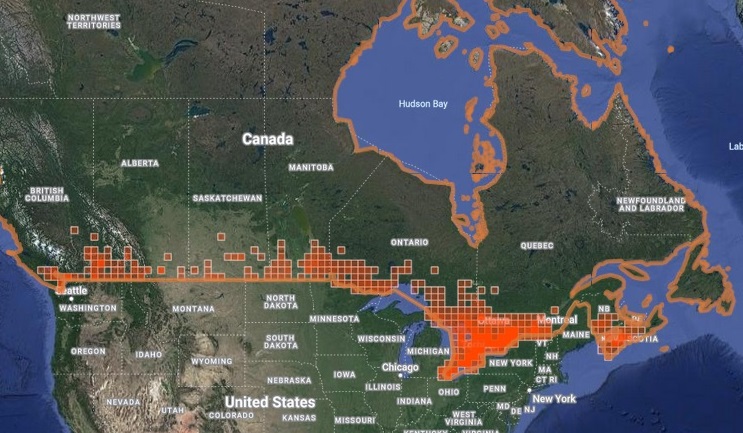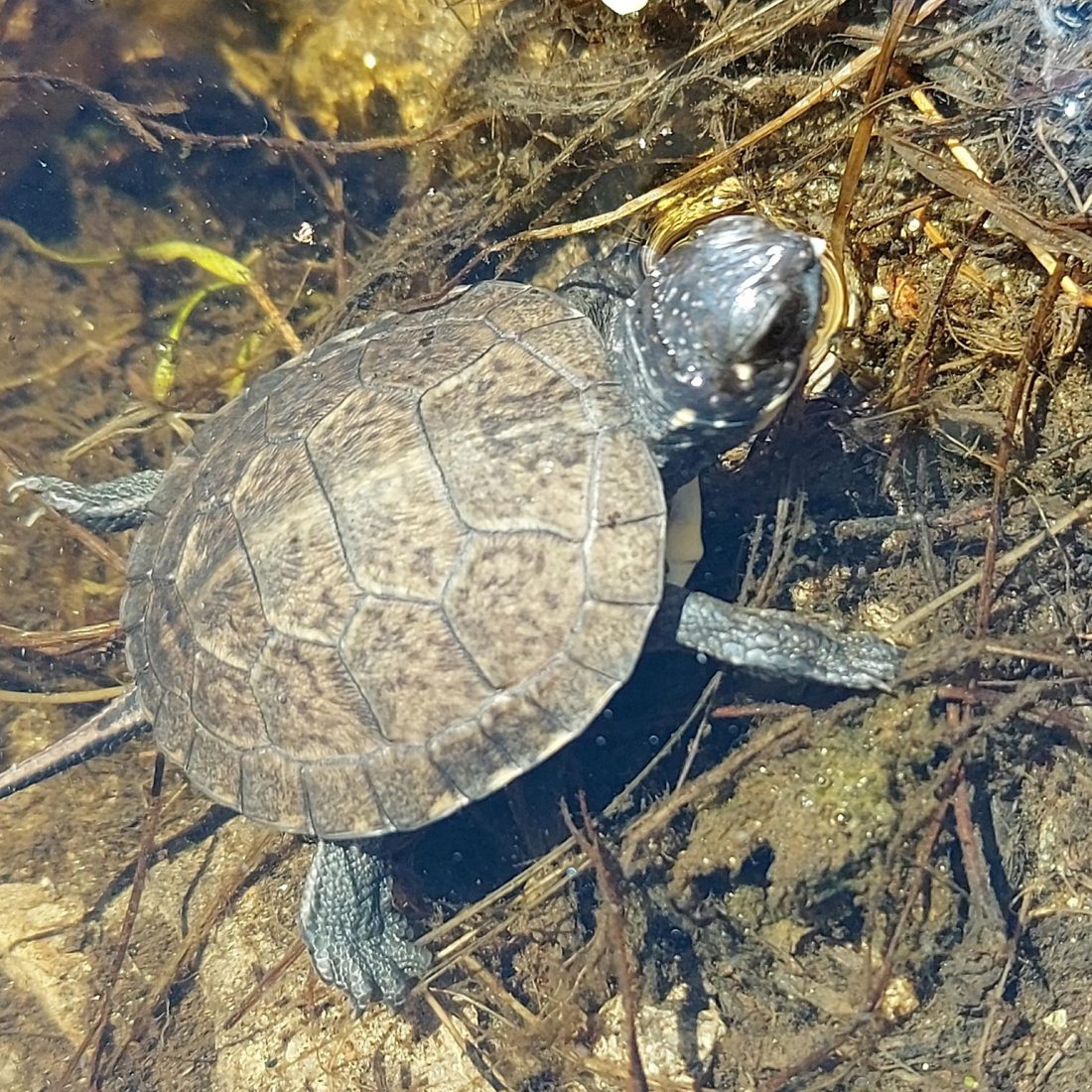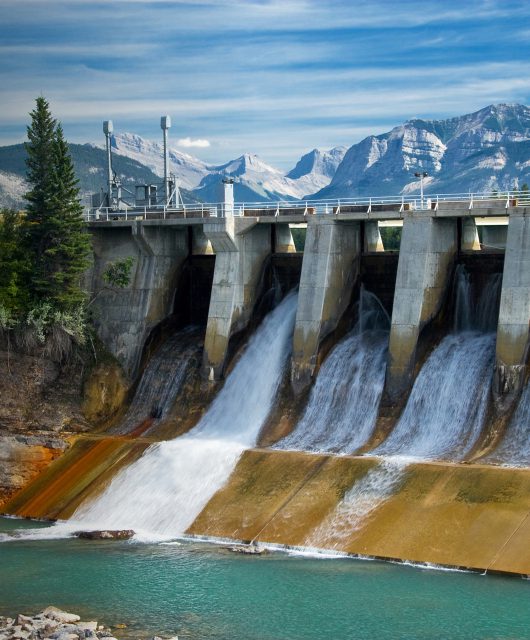It sometimes seems like half of the year in Canada is winter.
That might not be quite true, but it can make people wonder if the Great White North is important for species like turtles that prefer warm summers to frozen winters. Here are five reasons why Canada is important to turtles and turtle conservation.
#1: Turtles are widespread in Canada

Turtles aren’t just found in the warmest parts of southern Ontario and southern British Columbia. The Painted Turtle is the most widespread turtle in Canada and it is found in every province with the exception of Prince Edward Island and Newfoundland and Labrador. The Canadian range of the Painted Turtle spans the entire length of the country, from Victoria in the west to Halifax in the east, a distance of more than 4000 kilometres. Canada supports three different subspecies of the Painted Turtle: the Western Painted Turtle in western Canada, the Midland Painted Turtle in Ontario and Quebec, and the Eastern Painted Turtle in eastern Canada. The Painted Turtle is truly a national species.
#2: Turtles are found farther north than many people think
Turtles occur in some areas with long and cold winters. Snapping and Painted Turtles are found north of Lake Superior. The northernmost populations of Painted Turtles in Ontario are only about 300 kilometres from James Bay. Painted Turtles are also found north of Winnipeg and almost as far north as Saskatoon. The range of the Painted Turtle covers more than 1 million km2 in Canada.
#3: Canada represents a large amount of the global range for some species of turtles

The Blanding’s Turtle is a globally endangered species and is largely limited to the area around the Great Lakes. It appears to not like it too hot. Approximately 20 per cent of the global range of the Blanding’s Turtle is found in Canada. That adds up to more than 200,000 km2 of Canada that is occupied by the Blanding’s Turtle. This means that the Canadian portion of its range is not just a tiny fringe, but a major part of its global distribution.
#4: There are lots of turtles in Canada
Estimating the number of turtles in Canada is difficult. It is estimated that there are likely between 25,000 and 45,000 Blanding’s Turtles in Canada. There are likely more Painted and Snapping Turtles in Canada, given their larger distributions, so there are easily more than 150,000 turtles in Canada, highlighting the importance of Canada to turtle conservation.
#5: Climate change will affect the distribution of turtles
With climate change some areas may become unsuitable for turtles. For example, the Wood Turtle depends upon relatively cool streams. Recent research on Wood Turtles found that optimal habitat in the northeastern USA will decrease by more than 50 per cent over the next half century because of climate change. This will make Wood Turtle habitat in Ontario, Quebec, New Brunswick, and Nova Scotia even more important. Similarly, recent research on Blanding’s Turtles suggests that in Wisconsin, climate change will make the southern third of the state unsuitable for the species. While the same may also be true for extreme southern Ontario, it also means that the range of the Blanding’s Turtle in central and eastern Ontario will become even more important.
The Great White North is a great place to be a turtle and as climate change continues to heat up the planet, Canada’s wetlands, lakes, and rivers will become even more important to turtles. Canada’s wetlands aren’t just the northern fringe of turtles’ ranges, they are key parts of their distributions. All of Canada’s freshwater turtles are now listed as species at risk, declining because of habitat loss, road mortality, and other threats. Protecting Canadian wetlands is an important part of protecting turtles across North America.




1 comment
Somebody should model how far north eggs of each species of Turtle can hatch, and then model how this will move with climate change. It seems that Snappers wander far north of where they could hatch (Schueler & Karstad. 1975. Notes on the distribution and habitat of amphibians and turtles in northwestern Quebec. Canadian Field-Naturalist 89:57-59), and one sees the tracks of escaped captive Turtles across campsites in central British Columbia, but it would be a nice sign of an intentional transition to a changed climate if this northward movement was recognized and facilitated.